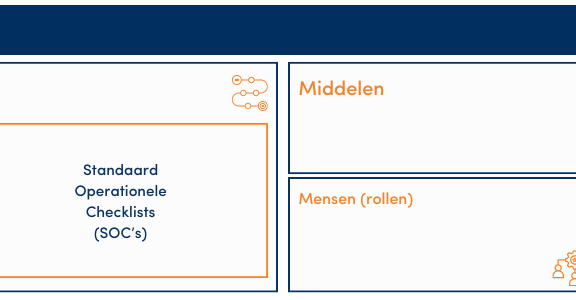
Project management for creating an effective franchise manual
Creating a franchise manual is an essential step in building and maintaining a successful franchise formula. A well-crafted manual serves as the operational and strategic guide for your franchisees, ensuring uniform business operations, customer approach, and brand consistency. For new franchisees, the manual provides the necessary tools to successfully replicate the formula, while for existing franchisees, it acts as a reference to manage daily operations effectively.
However, creating a franchise manual can be a challenging and complex process, especially without a structured approach. Project management plays a crucial role in ensuring that the process runs smoothly from start to finish. This article focuses on franchisors and how they can effectively use project management to develop a successful franchise manual.
Why a franchise manual is indispensable
A franchise manual offers many benefits. It ensures that all franchisees follow the same guidelines, leading to a consistent brand experience for customers. Additionally, the manual helps standardize operational processes, increasing efficiency and reducing the likelihood of errors. Finally, a well-documented manual contributes to the professionalization of the formula, establishing confidence in potential franchisees.
For franchisors, a manual also means less time and effort is needed to answer franchisee questions about daily operations or procedures. The manual provides answers to common questions and offers a solid foundation for all aspects of franchising.
The importance of project management in creating a manual
Creating a franchise manual is a project that requires extensive planning, coordination, and involvement from various departments. Without project management, the process can get out of hand, resulting in an incomplete, incoherent, or delayed manual. Project management ensures that a clear structure and planning are maintained, deadlines are met, and all parties involved know their responsibilities.
Steps in the project management process for a franchise manual
Developing a franchise manual can involve various components, depending on the complexity of the formula. The following steps provide an overview of the main phases of the project management process:
1. Define the goal and scope of the manual
The first step is to clearly define the purpose of the manual. What exactly should it include? In many cases, a franchise manual covers operational guidelines, marketing strategies, customer approaches, personnel policies, and legal requirements. It is important to define the scope so that the project team knows what is expected of them and what falls outside the scope.
2. Assemble a project team
Creating a manual requires input from various departments within the organization, such as legal, operations, marketing, and HR. A multidisciplinary project team ensures that all relevant expertise is brought together. This team may also include external advisors, such as franchise consultants, to provide specific knowledge. By assembling a diverse and skilled team, you ensure that all necessary information is correctly and completely included in the manual.
3. Develop a project plan and timeline
A good project plan is the backbone of the manual process. The plan should include key milestones, such as information gathering, writing sections, feedback rounds, and approvals. Create a realistic timeline for each phase of the process, with clear deadlines. Good planning ensures that the project stays on track and helps prioritize the content and stakeholder engagement.
4. Gathering and structuring information
In this phase, the content of the manual is gathered. This can be done through interviews with franchisees, input from various departments, or existing documentation within the organization. It is important to structure the information in a way that is logical and easy to follow. A franchise manual must not only be informative but also accessible and well-organized. Use clear chapters and a table of contents so that franchisees can quickly find the information they need.
5. Writing and editing the manual
Writing the manual is an iterative process that often requires multiple feedback rounds. Begin with a first draft that covers all core topics. This is followed by an editing phase where the content is checked for consistency, clarity, and applicability for franchisees. Have various stakeholders, such as legal advisors and operational managers, review the content to ensure everything is correct. A clear writing style is essential so that franchisees can easily understand what is expected of them.
6. Feedback and approval
A franchise manual must be approved by all relevant departments and stakeholders before it is finalized. This process includes feedback rounds where legal, operational, and marketing aspects are checked. Regular feedback moments ensure that the manual is widely accepted within the organization and that the final version meets the expectations of both the franchisor and the franchisees.
7. Publication and implementation
Once the manual is approved, it can be published. This can be done both digitally and in physical form, depending on the franchisor's preferences. In addition to publication, it is important to train franchisees in using the manual. This can be done during introductory sessions for new franchisees or through webinars for existing franchisees. By having a clear implementation strategy, you ensure that the manual is actively used and does not remain a static document.
8. Maintenance and updates
A franchise manual is never completely finished. As the franchise evolves, the guidelines and procedures in the manual must also be updated. It is wise to establish a plan for regular evaluations and updates of the manual. This can be done annually or when significant changes occur within the formula, such as new regulations, product launches, or market developments.

